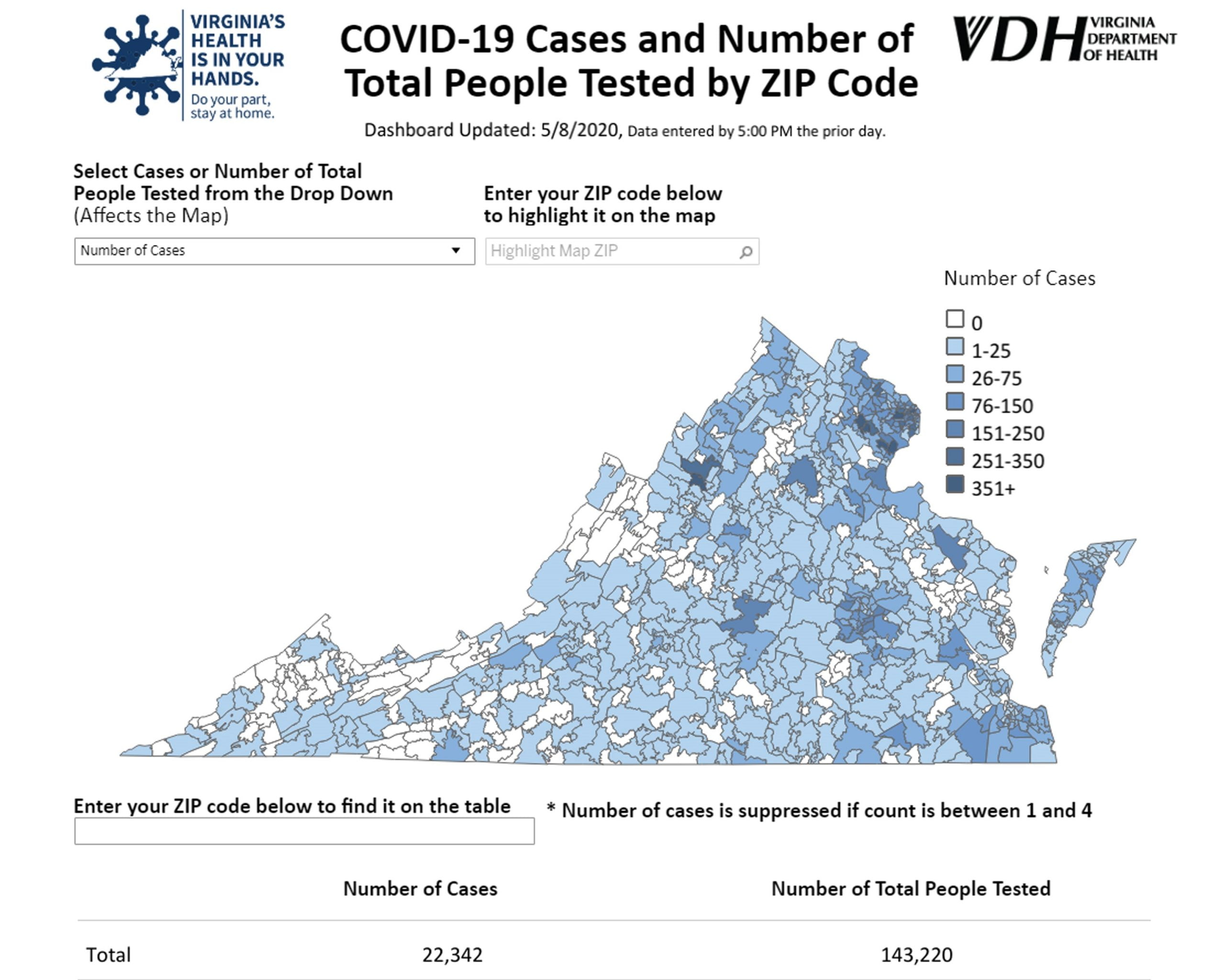 Research and testing data can now be searched by zip code on the Virginia Department of Health’s (VDH) website, which has led to some benefits and some drawbacks as well.
Research and testing data can now be searched by zip code on the Virginia Department of Health’s (VDH) website, which has led to some benefits and some drawbacks as well.
While individuals can now find data more focused on where they live, the extra data comes with added complexity. To help with interpreting the data, VDH has released some tips for the layman:
*VDH has county data on every case and laboratory report, but does not have ZIP code data on every record. Because this field is not complete, the total number of cases and tests by ZIP code may not match the same total count-by-county.
*VDH is reporting testing encounters among out-of-state residents who are tested in Virginia. These tests will not be included in data presented by ZIP codes in Virginia.
*ZIP codes are primarily used by the post office for delivering mail. The most efficient mail delivery routes don’t necessarily care about city and county borders. Just like you might have a mailing address for a city that you don’t live in, ZIP codes sometimes cross county and census block lines. This can make it difficult for public health to look at rates per 100,000 population, which is one of the ways we look for patterns in disease data that prompt action.
*Because these data are provided at such a local level, VDH needs to take extra steps to protect the privacy of personal health information. To do this, we suppress case counts of 1-4. We are not suppressing small case counts by city/county because the smallest counties still have enough people in them to provide some privacy.
Some ZIP codes are mostly industrial or commercial, so there aren’t a lot of people living in them. These ZIP codes may be grouped together with other ZIP codes to provide a better picture of a residential area. VDH is doing this by presenting ZIP Code Tabulation Areas, or ZCTAs. You can read more about ZCTA methodology on the Census website.
*Some ZIP codes may seem surprisingly populous because they serve as the mailing address for a large group of people. College campus mailboxes and P.O. boxes are both examples of this.
The Virginia Department of Health added a new function to its website – a database of COVID-19 cases that may be searched by zip code.




